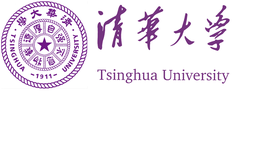Tsinghua University
NO.30, Shuangqing Road
100084 Haidian District, Beijing
China
www.tsinghua.edu.cn/en

Tsinghua University
NO.30, Shuangqing Road
100084 Haidian District, Beijing
China
www.tsinghua.edu.cn/en
The Biology Department, established in 1926, was one of the first bases in China to carry out biological education and scientific research. During the 93 years since its establishment, especially within the 35 years after the re-establishment, the School of Life Sciences has relied on the advantages of Tsinghua University to target the international frontier. Through the support of the National "211" and "985" projects, it widely recruits
talents both nationally and internationally, seizes opportunities, develops rapidly, and has made significant achievements in personnel training, scientific research, faculty team building, and discipline construction. Currently, the School of Life Sciences has recruited a staff of 122 full-time faculty members, as well as 120 post-doctoral fellows and more than 400 contract employees.
In MIX-UP, TU will be work package leader of WP3 ('Plastics monomer metabolism'), which focuses on the catabolism of complex monomer mixtures from mixed plastics hydrolysates. The requirements for the versatility of the organisms used for the digestion of these monomers are high as many catabolic pathways will be involved. TU will work on the metabolic engineering of different Halomonas strains to facilitate especially the uptake and metabolisation of degradation products of plastics, e.g. PET, PUR or PLA (Task 3.5).
Newly designed and optimised metabolic pathways, resulting in Halomonas strain which are able to use plastic degradants as substrates or precursors for the synthesis of functionalised polyhydroxyalkanoates (PHA) will be the TU contribution in WP5. A minor part will be accomplished in the dissemination of the MIX-UP findings and results in WP8. The successful implementation of this project will establish a scientific way from plastic wastes to be converted to high-value-added products.

Dr Qiong Wu works as a tenured associate professor at the Center for Synthetic & System Biology / School of Life Sciences / Tsinghua University. His expertise is bioengineering, synthetic biology, and regenerative medicine. He has published more than 100 SCI. Dr Wu won the first prize of Beijing Science and Technology Progress Award (2001), second prize of National Technological Innovation (2002) and second prize of Beijing Science and Technology Award (2012).

Tsinghua University
Biology Department
Major Team Member
Prof. George Guo-Qiang Chen is the director of the Center of Synthetic and Systems Biology and a professor of School of Life Sciences, Tsinghua University. His expertise is in microbiology, microbial metabolic engineering, synthetic biology, system biology, fermentation, material sciences and engineering and biomaterials. Prof. Chen has more than 30 years of R&D experiences on microbial physiology, microbial PHA production and applications, and has published over 300 international peer-reviewed papers with over 17,500 citations (H-Index 63) as reported in Web of Science. With over 35 issued patents and 45 pending patents, Prof. Chen's technologies have been provided to several companies that succeeded in mass production of microbial polyhydroxyalkanoates (PHA).

Dr Wu is a member of the Center of Synthetic and Systems Biology and School of Life Sciences, Tsinghua University. His research focuses on the degradation and stability regulation of PHA synthesis proteins, gene regulation under high cell density condition in fermentations. Dr Wu has published 40 papers in SCI journals, and five patents have been issued. He participated in five projects from the National Natural Science Foundation and one sub-project from the National Key R&D Program.